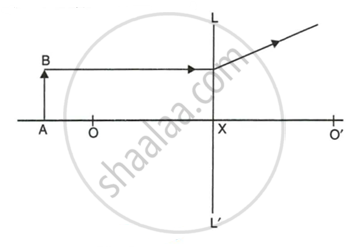Advertisements
Advertisements
Question
When an object is placed 10 cm in front of lens A, the image is real, inverted, magnified and formed at a great distance. When the same object is placed 10 cm in front of lens B, the image formed is real, inverted and same size as the object.
What is the nature of lens A?
Solution
Lens A is a converging (convex) lens as only a converging lens forms a real image.
APPEARS IN
RELATED QUESTIONS
Define the principal focus of a concave lens.
A ray of light is going towards the focus of a concave lens. draw a ray diagram to show the path of this ray of light after refraction through the lens.
Construct ray diagrams to illustrate the formation of a virtual image using a diverging lens.
A beam of light is incident through the holes on one side of a box and emerges out through the holes on its opposite side as shown in the following figure:
The box contains:
(a) a glass prism
(b) a concave lens
(c) a convex lens
(d) a parallel-sided glass slab
An object is 2 m from a lens which forms an erect image one-fourth (exactly) the size of the object. Determine the focal length of the lens. What type of lens is this?
Name one of the common defects of vision and the type of lens used to remove it.
Study the diagram below.

- Name the lens LL’.
- What are the points O and O' called ?
- Complete the diagram to form the image of the object AB.
- State three characteristics of the image.
- Name the lens which always forms an erect and virtual image.
- State whether the image in part (a) is magnified or diminished.
Convex lens : converging : : concave lens : _______
Give two characteristics of the image formed by a concave lens.
